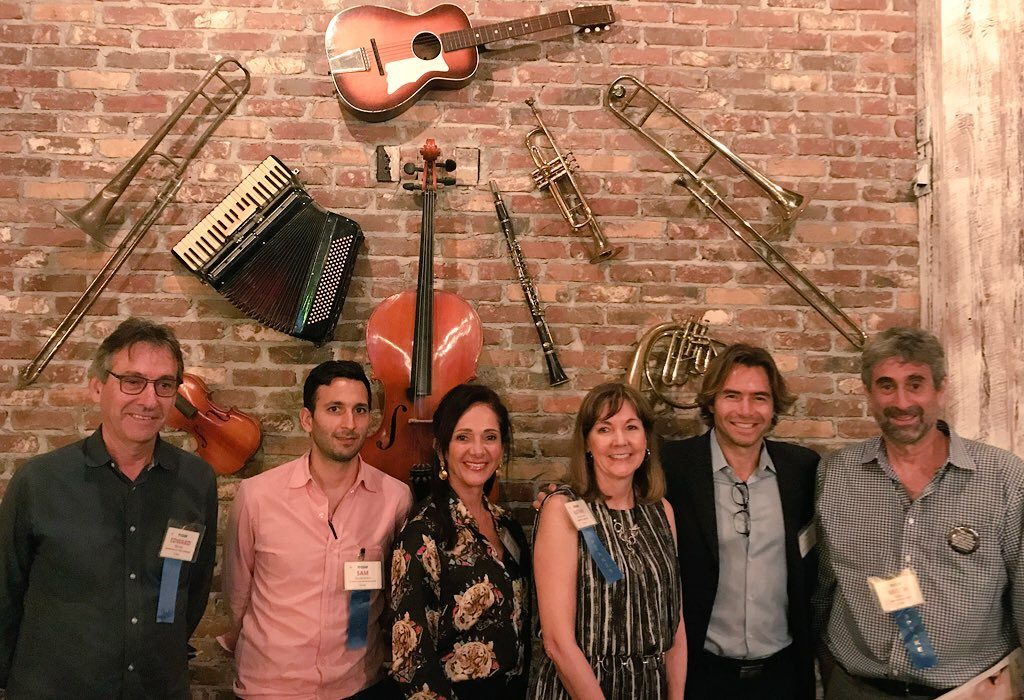The retail industry is experiencing more disruption than any other commercial sector. A fundamental shift in consumer preferences is forcing even the most established retailers to re-think their core business models. While many perceive these changes as the downfall of brick and mortar, amenable brands are recognizing that retail is not disappearing but is instead being presented with countless new opportunities for reinvention.
In advance of the holiday spending season, Tadd Schwartz moderated a panel that explored how some of the most successful retail brands in South Florida adapted their strategies to thrive in this new landscape. Panelists included Ellen Latham, Founder of Orange Theory Fitness; Mitch Kaplan, Owner of Books & Books; Sam Gorenstein, COO of My Ceviche and Zuuk; Edward Beiner, Founder of Edward Beiner Fine Eyewear; and Kathy Moorman, Vice President of Real Estate at Baptist Health South Florida.
All of the panelists agreed that as more brands adapt and evolve in the face of a changing market, they are proving that retail is not dead, it just needs to be reimagined. Here is how they are doing it:
Experiences Over Consumption
Today’s consumers are looking for places to be—not things to buy. Smart retailers have caught on to the new purpose of physical locations which is to offer a memorable, meaningful and multi-sensory experience – think Wynwood street art. Books & Books was one of the first retailers to embrace this concept as the brand transformed the idea of the traditional bookstore by turning into a progressive event and dining space with guest speakers, jazz nights and an upscale café.
This trend is shaping the development of new retail centers as consumers are forgoing traditional malls for mixed-use projects that offer lifestyle and entertainment options in addition to retail space. One of Miami’s landmark shopping destinations, Cocowalk, is moving forward with plans for an open-air plaza that will better integrate the project into the neighborhood’s urban grid and create a more immersive experience for visitors.
Miami Worldcenter, the 27-acre master-planned development in Downtown Miami, has likewise pivoted from plans for an enclosed mall in favor of an outdoor ‘high-street’ retail promenade, now under construction.
Further north, initial work is now underway on phase one of South Florida’s newest retail project, Esplanade at Aventura. This outdoor shopping, dining and entertainment destination will cater to area residents and visitors from around the world when it opens in late 2019.
New Development Strategies
Increased competition has driven retailers to rethink their real estate footprint as they work to remain relevant with today’s consumers. In fact, real estate has become one of the most critical factors in a retailer’s growth strategy. Zuuk/My Ceviche recently looked for ways to minimize its square footage to accommodate the loss of share from apps such as UberEats. The brand opted to incorporate open kitchens that free up space while making the dining experience more interactive, prompting customers to dine in rather than order take-out.
Integrating Digital and Physical
Major brands are focusing on finding new ways to appeal to tech-centric customers with a key tactic being to bring online and mobile technologies together with their physical locations. Walmart is a good example of a legacy retail brand that is integrating digital and physical retail to create one seamless, customer-driven experience. The world’s largest retailer is expanding its Online Grocery Pickup service, which enables customers to do their grocery shopping online and schedule their pick-up in a store parking lot — without ever getting out of the car. Walmart’s newest innovation, Pickup Towers, are high-tech vending machine where customers simply need to scan a bar code on their smartphone in order to retrieve their items in seconds.









 See More Blogs
See More Blogs
Comments